The Window Speakeasy: A Beginner’s Guide to Window Replacements in Condominium Communities
Don't make these mistakes during your next window replacement! Windows are a critical piece of your building envelope that are responsible for...
Living in a coastal area, do you have headaches whenever you see the rusted metal components in your building?
Caring for your waterfront property can be a never-ending challenge of heavy wind and rain, deciphering labels of building envelope components for longevity on the coast and battling contractors and manufacturers claiming your warranty is void due to coastal conditions. Use this list of considerations to maintain your building’s health and feel confident in your investment.
Watch the webinar on this topic here.
Living in a coastal area, do you have headaches whenever you see the rusted metal components in your building? Do you find it hard to fight against wind and water damage with your waterfront condominium? This month, we’re exploring how to tackle everything from whimsical over-water projects to salty sea breezes, unraveling the secrets of keeping our beloved seaside properties both gorgeous and resilient.
Coastal and Over-Water Projects
Coastal projects, from piers to waterfront resorts, navigate a delicate dance between development and nature preservation. Over-water structures like homes and resorts brave marine challenges with clever planning, sturdy materials, and innovative engineering for lasting resilience.
(The photos below show coastal properties and over-water structures.)
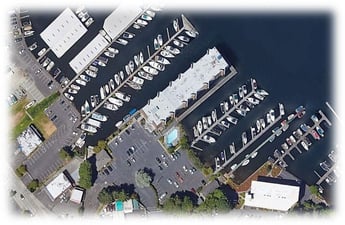
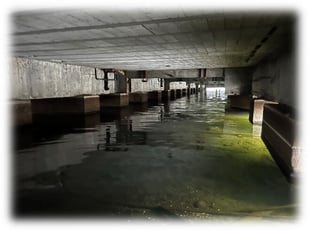
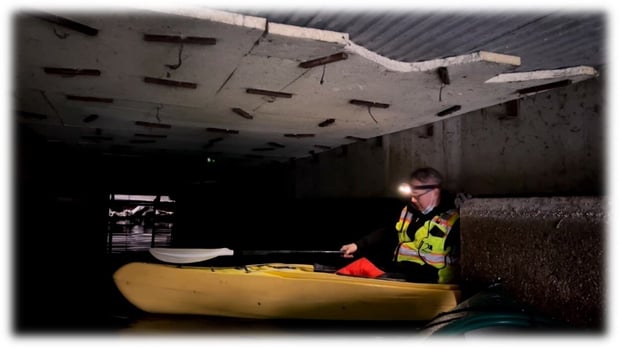
(The photo above shows J2 engineer, Stephen, kayaking underneath a building, over water, to inspect the conditions under the building.)
Coastal Issues and Solutions
Coastal communities face unique challenges that demand specialized construction and maintenance. Here are some common issues and solutions.
Windy Woes
High winds are a significant challenge in coastal areas, where the ocean can create intense wind gusts that exert considerable pressure on structures. J2 recommends buildings in coastal regions be designed to withstand these forces, often requiring reinforced materials and wind-resistant designs, to prevent structural damage, high maintenance costs, or safety hazards.
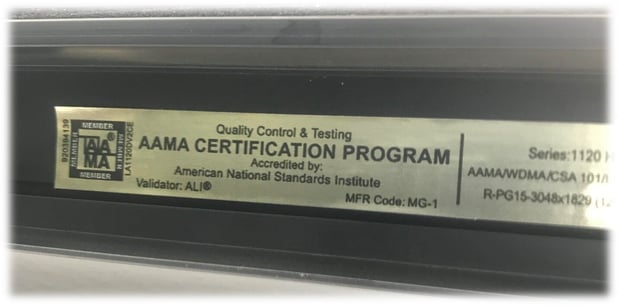
The photo above is an AAMA gold sticker of an R-PG15 window (R stands for residential), which is the lowest possible grade window you can buy. This window grade is only rated for around 27mph of wind speed, which means any wind speed higher than that will likely result in failure and leaks. On the coast or near bodies of water, you are likely to feel winds up to 110mph, often with wind-driven rain and sea spray, which will result in your windows leaking. J2 recommends at least PG35 to PG45 windows in coastal areas. This rating can withstand wind speeds and water penetration from 45 to 55mph.
Solutions:
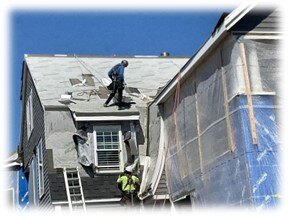
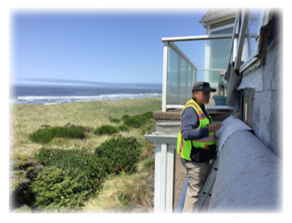
Strong winds going below the roof membrane are like air under a sheet or a parachute. The billowing can pull on the screw heads and rip the roof membrane or stretch it. When the next gust comes along, it stretches more and ultimately rips the roof off. To avoid this, our Registered Roof Consultant recommends a fully adhered roof to prevent billowing (photo on the left). The same goes for siding and exterior insulation attachment (photo on the right).
Rust & Corrosion
In coastal areas, corrosion is a constant challenge due to salt spray, salty air, and misty fog. Salt accelerates the deterioration of metals, potentially weakening structures. To combat this, use corrosion-resistant materials like stainless steel or specially coated metals and conduct regular maintenance to monitor and address any corrosion-related issues. Whatever the recommended maintenance schedule is for the products on your building, we recommend doubling it.
(The photos below show a deteriorated power outlet and a corroded steel lintel which was responsible for the support of a brick structure)
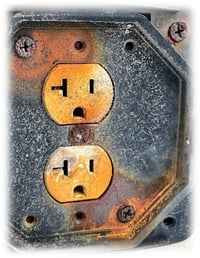
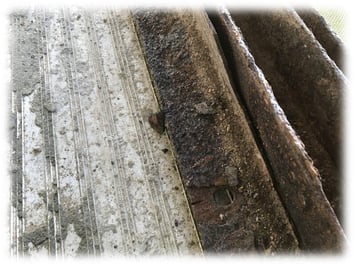
Solutions:
1. Corrosion-Resistant Materials: Use materials like type 316 stainless steel, aluminum, or galvanized steel, which are less prone to corrosion. Additionally, applying corrosion-resistant coatings or paints can provide a protective barrier.
Recommendations on steel and window:
Custom fabricated stainless steel (left photo below) can give the best fighting chance against corrosion. For windows, vinyl is nice, but fiberglass is even better (right photo below).
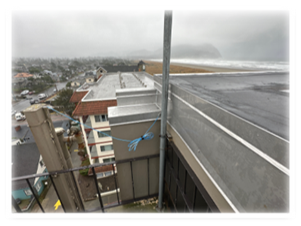
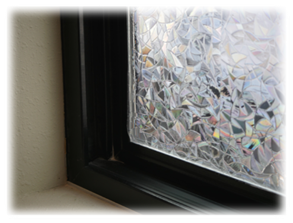
2. Regular Maintenance: Frequent inspections and maintenance can detect early signs of corrosion. Regular cleaning and simple application of protective coatings can extend the life of coastal structures.
3. Sealants and Barriers: Apply waterproof sealants to joints and surfaces to prevent moisture from penetrating and causing corrosion. Use barriers like membranes and liners to shield critical components from saltwater exposure.
Salt Spray
Salt spray from the ocean can travel considerable distances inland, affecting not only coastal structures but also vegetation and soil. The accumulation of salt can damage building materials, corrode infrastructure, and accelerate material degradation. Protective coatings and regular washing of surfaces exposed to salt spray are essential measures to mitigate its effects and extend the lifespan of coastal structures.
(Photos below show salt building up. The wheels on the bottom of the slide are disintegrating.)
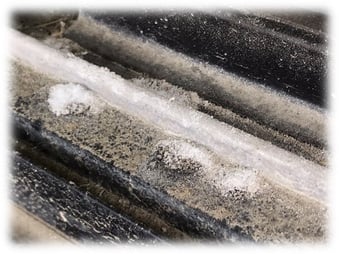
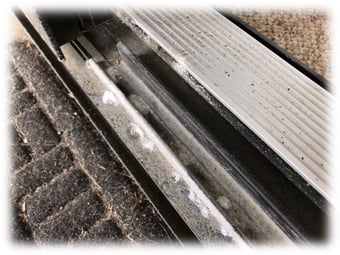
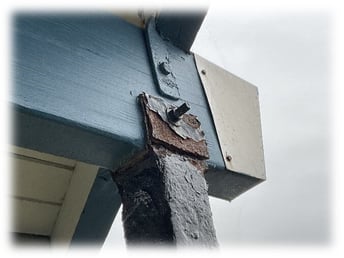

(Photo above on the left shows deteriorated structural component often referred to as a bucket bracket. The photo on the right is rusted metal sliding.)
Solutions:
Sand Trap
Sand, driven by wind and water, can erode foundations and create instability in coastal structures. It can accumulate everywhere (photos below), necessitating frequent cleaning and maintenance. The abrasive nature of sand can also wear down surfaces and equipment, leading to increased maintenance costs and the need for durable, sand-resistant materials.
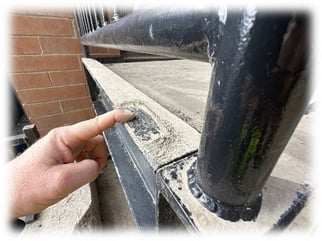
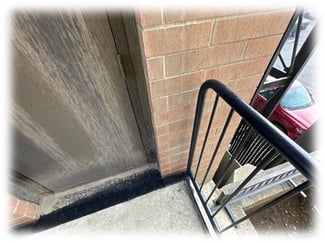
Solutions:
Bird BM
Birds’ nesting and roosting habits can lead to damage and hygiene issues, particularly on roofs and ledges. We all know that bird droppings are an eyesore, but did you know they can also speed up metal corrosion, leading to some hazardous conditions?
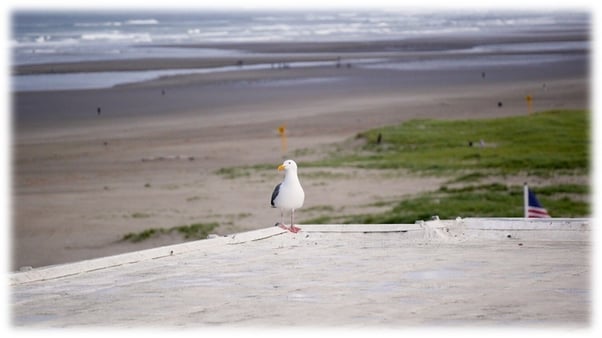
Solutions:
Tidal Tickles
Tides like to keep coastal structures on their toes, causing erosion and occasional flooding. We’ve even seen entire in-ground pools pop out of place and “float” a few inches above the ground due to tidal pressure. To stay in tune with the tides, use flood-resistant materials and set up effective drainage systems to keep everything shipshape!
Solutions:
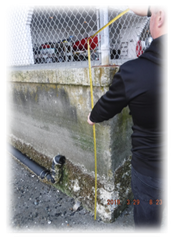
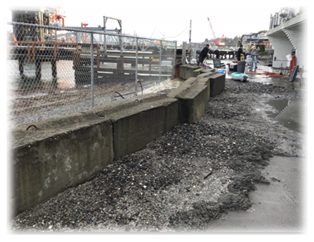
Moist Mischief
Water damage (shown in the photos below) is a persistent issue in coastal areas, where the proximity to the sea increases the risk of flooding, moisture infiltration, and wind-driven rain exposure. Effective waterproofing, proper drainage, and the use of water-resistant materials are essential for preventing water damage and ensuring the longevity of coastal structures.
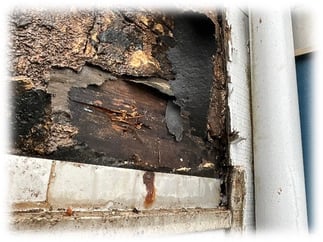
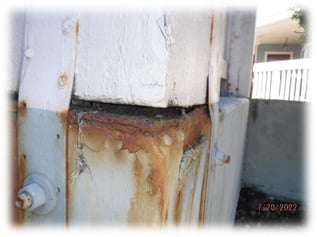
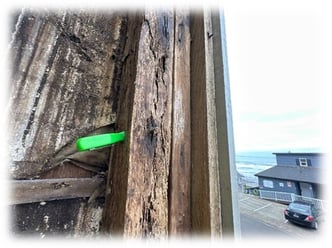
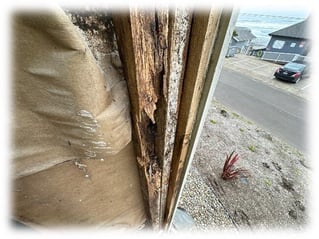
Solutions:
Temperature Swings
Coastal regions, especially the Oregon Coast, often experience a wide range of temperatures in a given calendar year. One day it’s sunny on the beach and the next there is an icy wind blowing off the water. These fluctuations can cause expansion and contraction in building materials leading to cracks, warping, and other structural issues. In the photos below, leaks behind the sheathing froze and formed icicles.
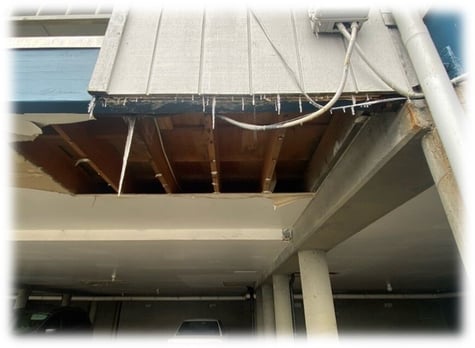
Solutions:
Ultrasonic Testing
Ultrasonic testing (UT) is a non-destructive testing method that uses high-frequency sound waves to detect internal defects, such as cracks, voids, and corrosion in building materials. It is particularly valuable in coastal environments, where corrosion and other forms of damage can be difficult to detect visually.
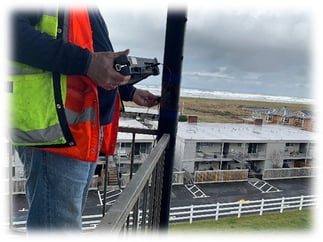
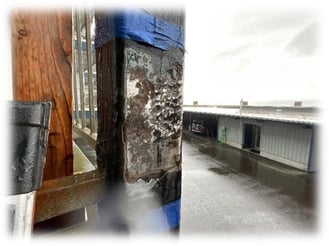
Ultrasonic testing (photos above) is commonly used for inspecting metal structures, such as bridges and pipelines, as well as concrete and composite materials.
Coastal Considerations
Construction Setbacks
Construction setbacks are an important consideration in coastal areas to minimize the impact of storms, erosion, and rising sea levels. Setback regulations typically require structures to be built a certain distance from the shoreline to reduce the risk of damage from coastal hazards. All of the issues listed above are intensified the closer the building is to the ocean!
Liquifiable Soils
Under the stress of things like earthquakes and storm impacts, liquefiable soils lose strength, behaving like liquids, increasing pore water pressure. This causes settlement, structural damage, and pavement movement. Each project is unique, so being aware of these conditions and planning for them is key.
Conclusion
Caring for coastal communities is like navigating a dynamic dance with nature. It's about understanding and tackling the unique challenges posed by these environments—from battling gusty winds and pesky corrosion to taming tides and temperature swings. Using good design and smart choices like materials selection and partnering with top-notch consultants and contractors are key for successful coastal living. We understand that many coastal properties are “just” vacation homes that are only occupied part-time, or maybe the property was a gift inherited from a family member. Whether you’re living in the building full-time or only visiting in the summer, it is important to maintain the health of your building so it can be enjoyed for years to come.
Have questions about maintaining your coastal properties? Give us a call.
Don't make these mistakes during your next window replacement! Windows are a critical piece of your building envelope that are responsible for...
Condo window care made simple—cleaning, inspections, and maintenance tips to extend lifespan, boost comfort, and prevent costly repairs.
Ready for spring showers? Make sure your windows are water-tight to protect your home from all sorts of damage.
Be the first to know about new Building Doctor tips, lessons for condo Boards, and DIY building maintenance.